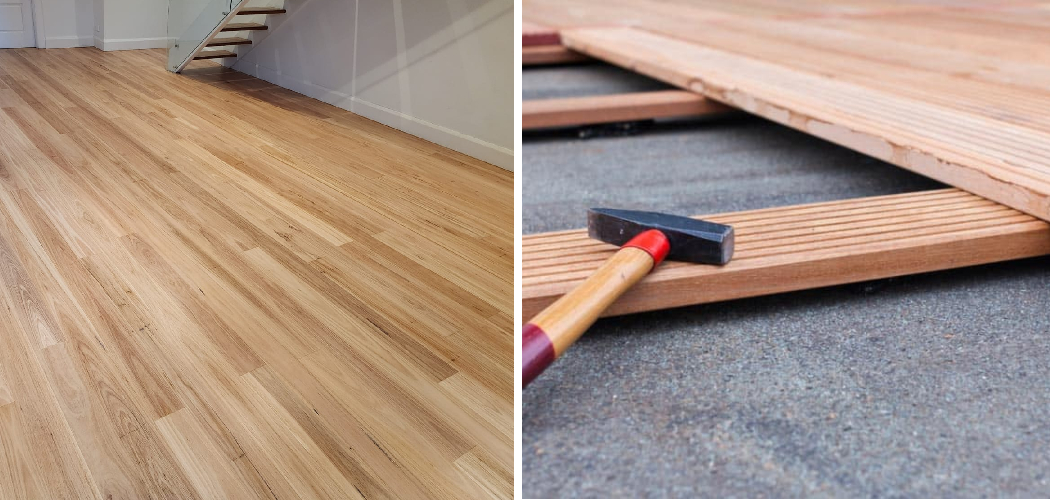Vibrations through a floor can disrupt your home or office. It can be loud and bothersome, but it can also cause structural damage to the building over time. Even small vibrations can affect things like plumbing, wiring, and furniture, making them shake or move slightly for no reason. Stopping these vibrations is important for comfort and the long-term safety of your home and office.
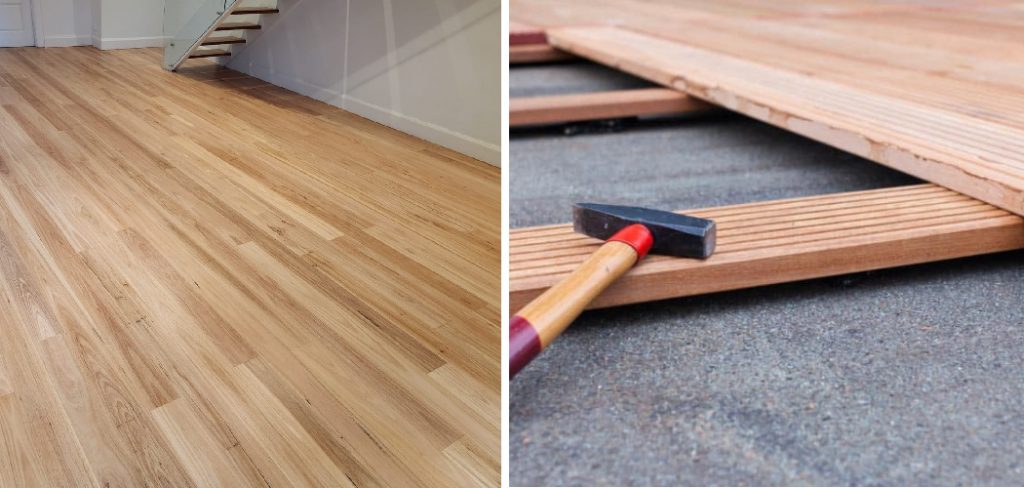
One of the main advantages of stopping vibration through the floor is that it can help reduce noise pollution and improve acoustics in any space. Vibration can easily travel through floors, walls, and ceilings, causing disruptive sounds for those living or working within the same area. In this blog post, You will learn how to stop vibration through floor.
Causes of How to Stop Vibration Through Floor
- Poor Floor Construction: Floor joists that are too narrow, undersized, or spaced too far apart can cause the floor to vibrate more than it should when walked on. Additionally, unsupported floors and weak spots can lead to excessive vibration.
- Heavy Appliances and Furniture: Household items such as refrigerators, washing machines, and heavy furniture can all cause floor vibration. The more items on the floor, the greater the vibration will be.
- Faulty Foundations: The movement of the foundation under a building can cause vibrations in the flooring. This is especially true of older buildings built on top of soil or clay-like materials instead of concrete or other solid foundations.
- Poorly Installed Floors: Floors that need to be properly laid out can cause vibration when walked on, as can uneven floors and floors with gaps between the tiles or boards.
- High-traffic Areas: Areas of a building that are used more often than others will naturally have more vibrations caused by movement simply because they’re being used more frequently.
- Poorly Insulated Walls and Ceilings: Walls and ceilings that are not adequately insulated will allow vibration to move from one surface to another, creating a “bouncing” effect that can cause vibrations in the flooring.
Fortunately, there are ways to reduce or prevent excessive vibrations through the floor. Insulating the walls and ceiling and adding structural support to the floor can help reduce vibration.
Materials You Will Need
- Heavy Furniture
- Carpet Squares
- Area Rugs
- Interlocking Foam Mats
- Cork Floor Tiles
- Neoprene Pads
- Acoustic Underlayment Matting
- Rubber Sheet or Flooring
- Door Seals and Draft Stoppers
- Vibration Isolation Straps or Washers
- Soundproof Foam Panels
- Adhesive Caulk
Heavy furniture such as bookcases, couches, armchairs, and cabinets placed directly over the vibration source can help absorb and dampen noise that passes through the floor.
Step by Step Processes for How to Stop Vibration Through Floor
Step 1: Inspect the Floor
The first and most important step in stopping vibration through the floor is to inspect the floor thoroughly. Check for loose boards or raised nails, as these can cause vibrations to travel along the floor and through the walls. If you find any of these issues, they should be addressed quickly before attempting to stop the vibration.
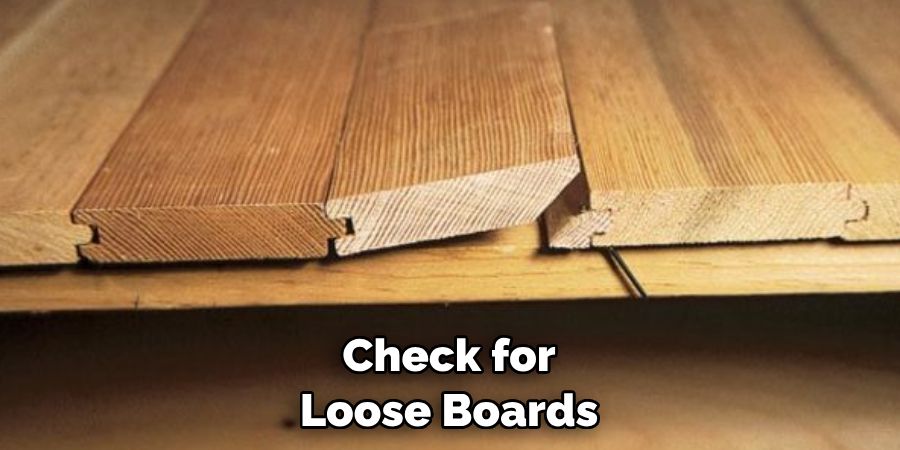
Step 2: Install a Vibration-Absorbing Material
After inspecting the floor, consider adding a vibration-absorbing material such as underlayment foam or rubber mats. These materials are designed to absorb vibrations and reduce noise levels significantly. The thickness of the material will depend on the source of vibration, so be sure to measure it before purchasing.
Step 3: Use Vibration Dampening Solutions
If the vibration comes from an appliance or other heavy object, anti-vibration pads or mats can help reduce it. These pads and mats are designed to absorb vibrations and keep them from traveling through the floor. You can also use foam insulation to absorb the sound waves of loud objects that may be causing vibration.
Step 4: Add Mass
Adding mass to the floor can help reduce vibrations as well. This could be in the form of a heavy rug or furniture placed strategically around the room. The added weight helps absorb and disperse the energy, thus reducing and eventually stopping vibration through the floor.
Step 5: Replace or Repair Any Damaged Floorboards
If you’ve noticed any loose or damaged floorboards, replacing or repairing them as soon as possible is important. This will help prevent further vibration from traveling through the floors and walls. Alternatively, you can add a layer of insulation underneath the floorboards to help reduce any vibrations coming up from below.
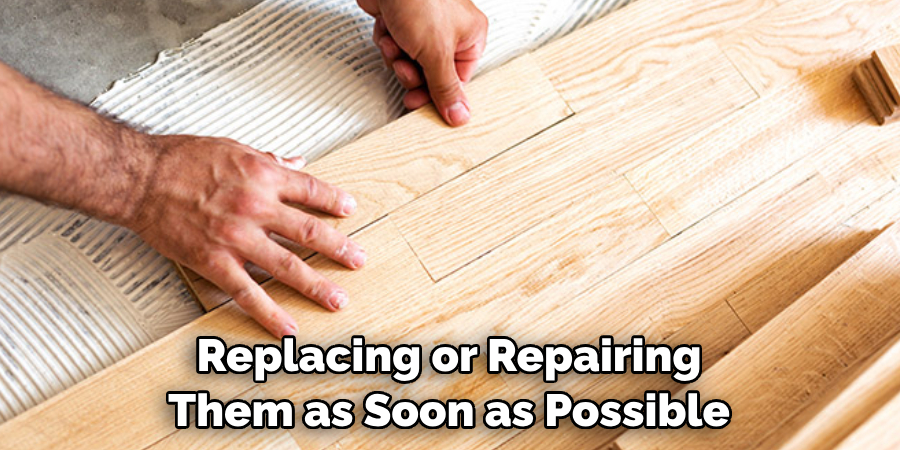
Step 6: Reduce Unnecessary Foot Traffic
Finally, reducing the amount of foot traffic in the area can also help reduce vibrations through the floor. This is especially true for rooms with hardwood floors where vibration from shoes and feet can easily travel through the boards.
Following these steps, you should be able to stop vibration through the floor and enjoy a quieter living space. Prevention is key, so inspect the floor, add mass and insulation when necessary, and repair any loose boards or raised nails as soon as possible. With these steps, your floors should remain vibration-free for many years.
Tips for How to Stop Vibration Through Floor
- Always wear protective gear like gloves, safety glasses, ear plugs, etc., when working around vibration sources.
- Check your floor for any existing damage or cracks – vibrating machinery can further aggravate these areas and cause them to become worse.
- Ensure the equipment is installed correctly and securely in its intended environment; loose or heavy machinery may create more vibration than necessary.
- Use anti-vibration mats or other tools underneath the equipment to reduce the impact of vibrations on the floor and surrounding areas.
- Place insulation materials between your floors and walls to absorb additional noise levels that result from vibration.
- Ensure all machines are regularly serviced and maintained to ensure the smooth running of operations.
- Install shock absorbers or other dampening materials between your floor and walls, which will help reduce vibration levels throughout the building.
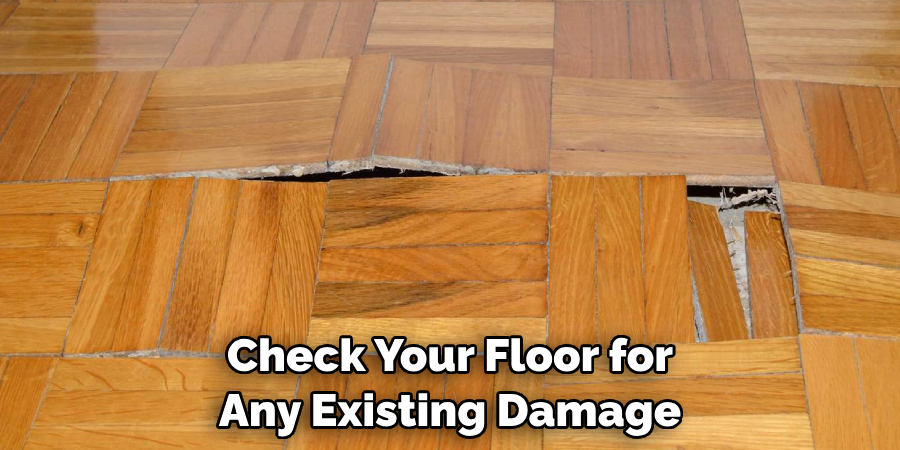
Following these tips can help stop vibration from transferring through your floors, allowing you to work safely and efficiently in your workspace.
Are There Any Easy Ways to Soundproof Your Floor Against Vibrations?
If you’re looking to stop vibrations from traveling through your floor, you can try several easy methods. One of the most cost-effective ways is to install an area rug or carpet in rooms that have hardwood or tile floors. This will absorb some of the sound energy and help reduce vibration transfer. Additionally, adding a layer of foam padding beneath the rug or carpet can help cushion good vibrations and keep them from passing through your floor.
Another solution is to hang a thick curtain between the room causing the vibration and other rooms in your home. This will help absorb some sound energy before traveling through the floor. Additionally, invest in noise-canceling windows to block sound from entering your home. If you want to invest more money and time, install thicker, denser floor materials such as cork or rubber padding.
What Are the Benefits of Using Acoustic Mats to Reduce Vibration?
Soundproofing or acoustic solutions are an effective way to reduce floor vibration and provide many benefits. Acoustic mats can be used as a barrier between the source of sound and the receiving surface, preventing vibrations from transmitting through walls, ceilings, floors, and other surfaces. Acoustic mats absorb energy through sound waves and dissipate them away from a source. This reduces the amount of sound that passes through a surface and minimizes noise pollution.
The most common and effective acoustic mat is a mass-loaded vinyl (MLV) barrier, composed of layers of dense material such as rubber or cork sandwiched between two protective film layers.
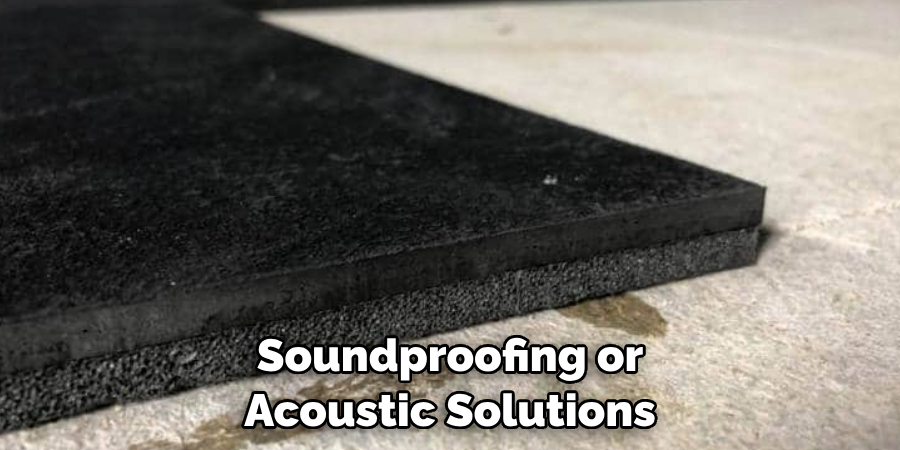
MLV barriers are highly flexible and can be used in many different applications. They can be used between floor joists to reduce impact sound transmission, under carpets and rugs to reduce footstep noise, or underneath appliances to prevent vibration from transmitting through the floor.
How Can You Identify the Source of Vibrations in Your Home, and How Should You Go About Addressing It?
A variety of sources can cause vibration through your floor. The most common culprits are: Washing machines and dryers, heat pumps, refrigerators, air conditioners, dishwashers, and vacuums. If you’re unsure which appliance is causing the vibration, try turning off all but one at a time until you identify the source. Once you’ve identified the source of the vibration, there are several steps you can take to reduce or eliminate it:
- Ensure your appliance is level on a sturdy surface, such as concrete or wood floors. Unleveled appliances can cause more vibration than necessary.
- Ensure any venting and exhaust hoses are tightly secured and check for gaps in the hose connections.
- Use rubber matting or pads between the appliance’s feet and the floor, especially if your appliance is located on wood floors. These mats can reduce vibration by providing a cushioning effect.
- Inspect your appliance’s motor mounts and other parts for signs of wear and tear. If you find any loose parts, tighten them according to your appliance’s user manual.
- Place rubber or foam washers between the body of the appliance and its mounting plate. This will help absorb vibration and reduce noise levels.
- Add an anti-vibration pad or material underneath the appliance, such as a rubber sheet or vibration-dampening foam.
- If you still have problems, try adding weights to the appliance (on top of the padding). This will help reduce vibration and minimize noise levels.
These are just a few solutions for stopping vibration through the floor in your home. Depending on the source of the vibration, other solutions may be necessary.
Are Any Other Methods Can Be Used to Reduce Vibrations in the Home?
Fortunately, you can use several other methods to reduce vibrations in your home. Here are some tips that will help you out:
- Use Vibration-damping Material: Vibration-damping materials such as rubber mats, foam, and acoustic wall panels can absorb the energy generated by vibrations running through your floor. The thicker the material, the more energy it can absorb.
- Anchor Large Appliances: If you have large appliances such as washing machines and dryers, anchoring them to the floor can help reduce vibrations in your home. You can also use anti-vibration mats or springs to isolate these appliances from the rest of the flooring.
- Install Carpets: Carpets can help absorb and dampen vibrations, making them a great choice for reducing noise and vibration levels in your home.
- Tune Up Equipment Regularly: Regularly tuning up any large machinery or equipment in your home will help ensure they run smoothly and reduce the vibration they generate.
- Insulate the Floor: Adding insulation can help reduce the amount of vibration transferred.
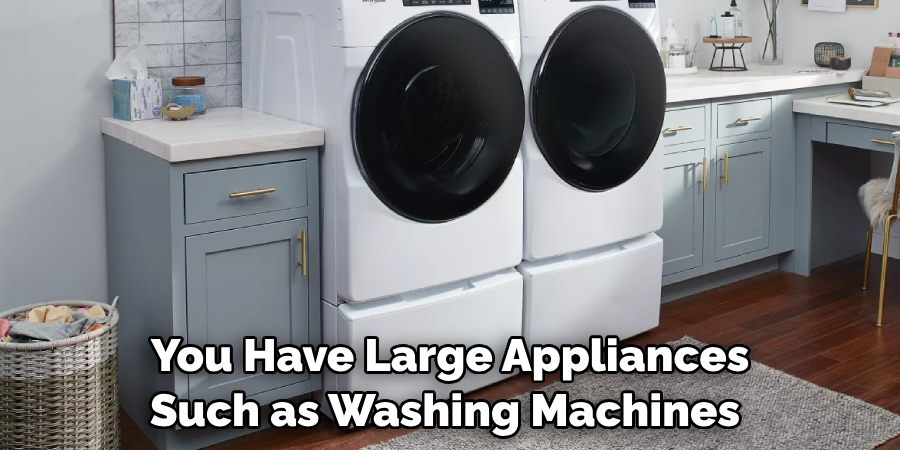
These are just a few methods to reduce vibrations in your home. By following these tips, you can significantly improve your home’s sound quality and vibration levels.
Conclusion
In conclusion, there are many steps you can take to stop vibration through your floor. From adding caulking and underlayment to using mats and rugs or reducing the source of vibrations, these methods can effectively minimize loud noise levels and improve your home’s overall quality of life.
It is important to take proactive measures to reduce vibration through your floor as it will help to improve the sound quality of your home and help protect your foundation from potential damage. This article has been beneficial for learning how to stop vibration through floor. Make Sure the preventive measures are followed chronologically.
